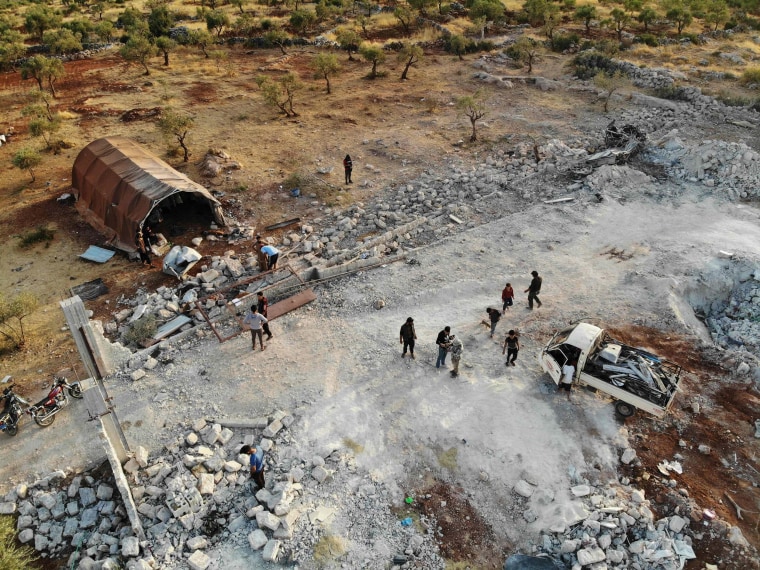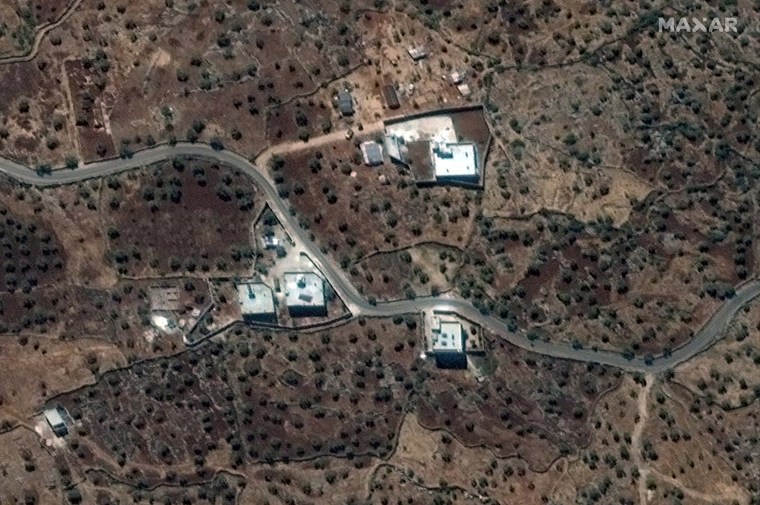Five years ago, Abu Bakr al-Baghdadi and his fighters marched across Iraq and Syria, imposing their hyperviolent interpretation of Islam on millions of people in their self-declared "caliphate."
This weekend, the founder and leader of the Islamic State militant group died by his own hand at the end of a dirt track. A mound of rubble was all that was left of his final hideout.
Satellite images, photos and social media content reviewed by NBC News pinpointed the compound's location roughly three and a half miles south of the border with Turkey and a little more from the Turkish settlement of Kavalcik.
Situated among a patchwork of brown fields dotted with green trees, the rural compound was where al-Baghdadi was hiding when U.S. special operations forces descended in a nighttime raid, according to information triangulated from two U.S. sources, the Syrian Democratic Forces, eyewitness accounts, the security consulting firm and NBC News partner Flashpoint, and footage from social media.
There are at least two other visible properties near the targeted compound. It is unclear who lives there and if they would have been aware of who was hiding next door.
Video from the direct aftermath shows a burnt-out car and charred bodies strewn on the ground. Footage taken by NBC News shows a gaping hole in the side of a nearby property.
The fact that al-Baghdadi was hiding in northwestern Syria is noteworthy as the area is dominated by al Qaeda affiliates — which have sometimes fought their fellow jihadis.
ISIS grew out of al Qaeda in Iraq and was at one time part of a "jihadi coalition" with the al Qaeda affiliate in Syria, then called the Nusra Front. The two groups split acrimoniously in 2014, with ISIS kidnapping and executing several members of the Syrian al Qaeda group.

Hundreds of ISIS combatants have already escaped to Idlib province along with many ISIS families, according to Fawaz Gerges, a professor of Middle Eastern politics at the London School of Economics.
Gerges said he was not surprised that al-Baghdadi chose to hide in Idlib province, in northwestern Syria.
"Few western intelligence services would have expected him to hide there, it's a less hostile place than other areas in Syria and Iraq under the control of the Kurds, Assad, Russia or even Turkey," he said. "Jihadis could melt away in Idlib."
The compound was also far away from the area where Turkey launched its invasion of northeastern Syria earlier this month.

